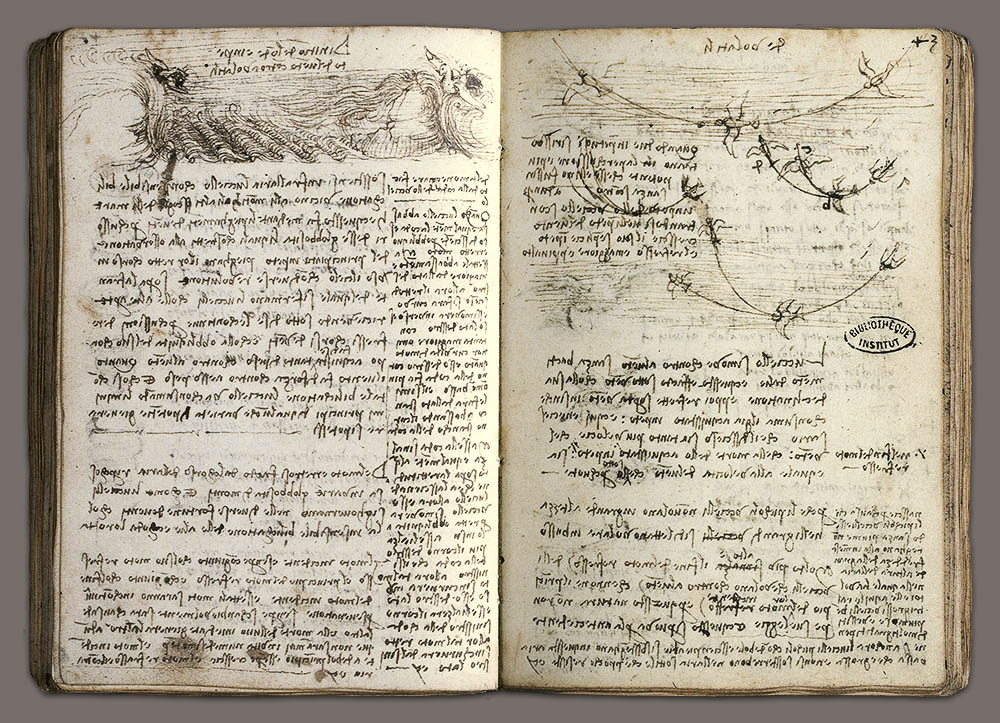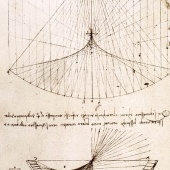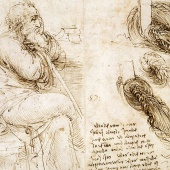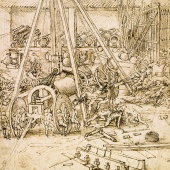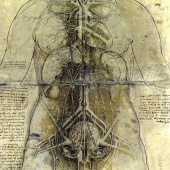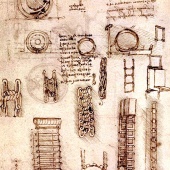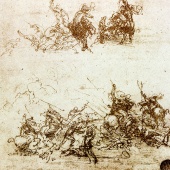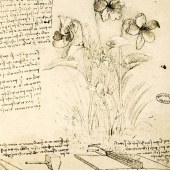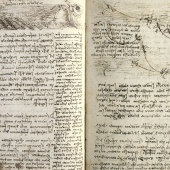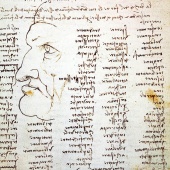Bird flight and wind
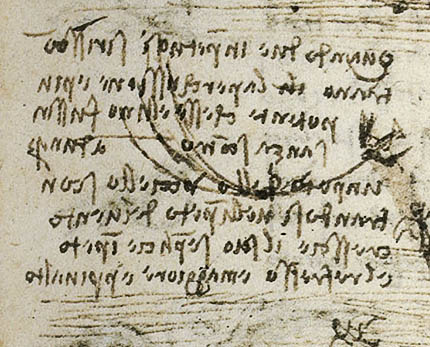
[…]The bird moves against the wind without beating its wings and this is done beneath the wind as it descends, and then it makes a reflex action above this wind until it has consumed the impetus already acquired ; […]

Why small birds do not fly at a great height and large ones do not like to fly low ?
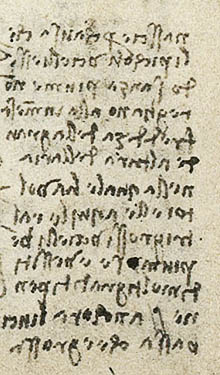
This arises from the fact that the small birds being without feathers cannot endure the intense cold of the greet height of the air at which fly eagles and other large birds which have more power of movement and are covered with many rows of feathers […].
Manuscripts from A to M, Paris, Institut de France.
These manuscripts, most of which are leather bound or in parchment of varied formats, are dated from 1487 to 1508. Many cover topics which are more scientific than technical. They were housed at the Biblioteca Ambrosiana in Milan from 1609 to 1674, then classified from A to M by the mathematician Giovanni Battista Venturi who scrutinised them from a scientific perspective. Like the Codex Atlanticus, they were seized as a war reparation by General Bonaparte when he rode victorious into Milan and sent to the Institut National. But when it was decided to return property seized in 1815, major collections were the prime focus meaning that the small manuscripts at the Institut were quite simply overlooked.
Pencil and ink, 15.1 x 10.2 cm
Paris, Institut de France, Ms E, f. 42 v - 43 r.
In addition to the anatomy of birds, Leonardo also studied their environment – the wind and air currents – along with their behaviour in this environment. Here, he notes the encounter between the bird and the wind in a "kinetics" mode which retraces flight in both space and time.
